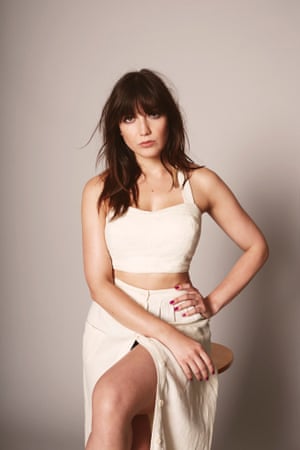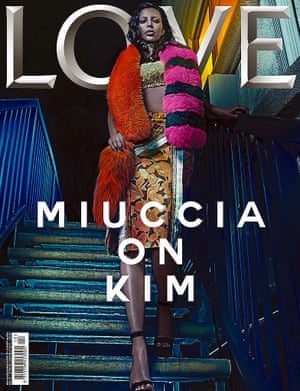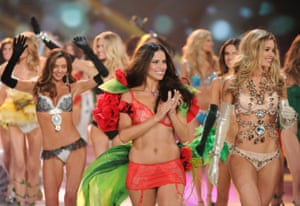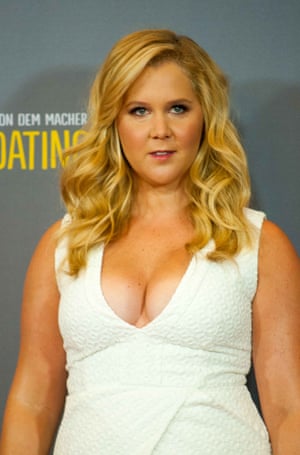he average bra size in Britain is 36D. That’s not small – 36D is a lifetime of painful stair-running and unavoidable cleavage away from the aspirins-on-an-ironing-board chests many catwalk models have. But it’s not huge, either.
The word “average” is generally synonymous with “normal”, which makes it interesting when brands such as Reformation start designing clothes with “larger busts” in mind, for the many of us with anything larger than a pair of apricots up top who sometimes find shopping a pain.
Obviously, this is a great thing. But Reformation’s “larger busts” are between a C cup and a DD cup. To me (a 34D) – and some of you, judging by the comments – a DD doesn’t exactly scream “larger”. It says, at most, “a bit bigger”. GG is large. But, the advent of a fashion company that begins at a C cup tells us a lot about how fashion treats tits generally.

In fashion, being anything above a C cup is novel. Model-wise, Lara Stone, Kate Upton and Gisele “the boobs from Brazil” Bündchen’s bouncy décolletés make them anomalies. And despite there being signs of change throughout the industry, namely in Victoria’s Secrets’ employment of Doutzen Kroes, Miranda Kerr and Adriana Lima in their “Angels” cast, they didn’t hire Upton for it, saying she was “too obvious”. That she has the biggest of them all seemed significant.
Broadly speaking, boobs and fashion are like oil and water: with enough shaking up, they’ll blend for a minute, but naturally they repel. Because breasts are difficult to dress, apparently. During couture week in 2013, Jourdan Dunn was left out of the Dior show because of her size. “Ahahahahahaha I just got cancelled from Dior because of my boobs!” she said on Twitter, before adding that she was “normally told I’m cancelled because I’m ‘coloured’, so being cancelled because of my boobs is a minor”, before ending with a smiley face that possibly speaks of massive frustration.

Speaking from experience, as a non-model, it can be difficult to dress and shop if you are bigger than a C cup. In fact, I’ve struggled in almost every high-street store to find tops that flatter my size – usually somewhere around a 12, depending on the store – and what I have in my bra. This isn’t something I’ve really talked to anyone about, either, and I’m not sure why. It feels like breasts are a subject often left out of body-image discussions, especially when it comes to clothes. I wonder if this is because we’re worried about cup size being equated with weight.
I have a friend with very large breasts and an astounding, 5ft 8in athletic body. She often has to buy size 16 or 18 women’s tops to fit them in properly without being constricted and cleavagey. For this reason, she only ever shops alone, and told me that she had never owed a designer item of clothing, because nothing she had tried on had fitted properly. What a shame that, because of the way most high-street stores have designed their womenswear – the result of filtering catwalk looks into something wearable – she ends up having to buy three sizes bigger than she actually is.
It would be easy to say, “Oh, why does it matter, it’s only a label,” but labels matter to a lot of women. They matter to me, whether I enjoy admitting it or not. I don’t want to buy a nice top in a size 16 just because my boobs won’t fit the 10 or 12.
Unless I stick to my uniform of slouchy, crew-neck T-shirts (often from Topman, rather than Topshop), it can be hard to avoid them looking … weird. Anything with a high neck makes me look boxy and uncomfortable, and squashes them down in a way that makes the nipples go really close together – not great when it’s cold and you don’t like padded bras. If you’re someone who likes their bras on the lacy, plunging side, though, a high-necked top can give you a four-boob appearance, with a highly visible, panna cotta-like jiggle up there when you walk around.

Generally speaking, women’s tops seem to be either high-necked or plunging, which just makes me feel shut out. That’s why I like men’s T-shirts from Gap, Cos and Uniqlo – they’re loose in the right places and don’t cling to the bits of back flesh that are gently separated by my bra. I don’t want my back to look like a shar pei’s face, but I don’t want to drown in something that masks my figure and femininity entirely. It’s tricky.
Designer-wise, I’m not really a dress person, so I’ve never gone down the Vivienne Westwood route (apart from splashing out on the notorious tits T-shirt, actually), although she’s known for designing with a curvier female shape in mind and is a stalwart for many women I know. When I have the money and fancy introducing something other than a white T-shirt or stripy breton into my wardrobe (last count: 21), I veer towards the more drapey, less gender-specific clothes of Margaret Howell, Acne and Comme des Garçons’ Play collections, because I don’t like tight stuff. Not being fond of having a cleavage can be a real issue if you’re an ample-busted woman buying designer wares – particularly dresses. I wish I had the confidence to absolutely smash it in the way Amy Schumer did at a premiere of Trainwreck, her chest a palace of luxury, but I don’t. Probably because my boobs have always made me feel intimidated whenever I’ve been able to afford a smart designer thing.

It’s hard to see how the situation will change when sample sizes are still the axis on which the fashion industry spins. Fashion designers still – despite the negative press, the inquiries and the genuine enthusiasm of some editors for doing their bit to try and instigate change – design for miniature, thin-hipped, tiny-busted girls with child-like bodies, because they believe the clothes hang better on them. It’s sample sizes that are loaned out for fashion shoots and, while designers might make exceptions and make something bespoke (see Kim Kardashian’s custom Prada on the cover of Love magazine), if a model struggles to wear sample size well because of her boobs, chances are she won’t be used. Jamie Ellis, a model manager at the agency IMG (which represents Upton, Stone and Bündchen), told Vogue last year that he had been seeing “designers more willing to change samples to fit a special girl” – but the emphasis there is on “special”. Being an exception to the rule.
I might feel a million miles away from the world of sample sizes, but I’m not. That’s where the entire fashion cycle begins, and sample sizes just don’t accommodate big(ger) boobs. We don’t need to get too The-Devil-Wears-Prada-blue-sweater-monologue about it, but Gucci’s original design and cut of something, say, is what will percolate through to Topshop’s floor. That is the blueprint, and it ignores things like a 36D average bra size.
So, while it’s great that companies are popping up to cater to the larger-breasted woman, perhaps it’s worth considering that a) the vast majority of bras go up to a DD anyway and b) not every woman wants to buy from a “plus-size” collection – even if that “plus” only relates to their boobs. These collections may claim to be affordable, too, but their limited production lines make them unaffordable for some people. Most women just want to shop and find things within their budget that look nice and fit well. If only it were that simple.
• Fashion for ‘women with larger breasts’: the article that caused the ruckus
Niciun comentariu:
Trimiteți un comentariu